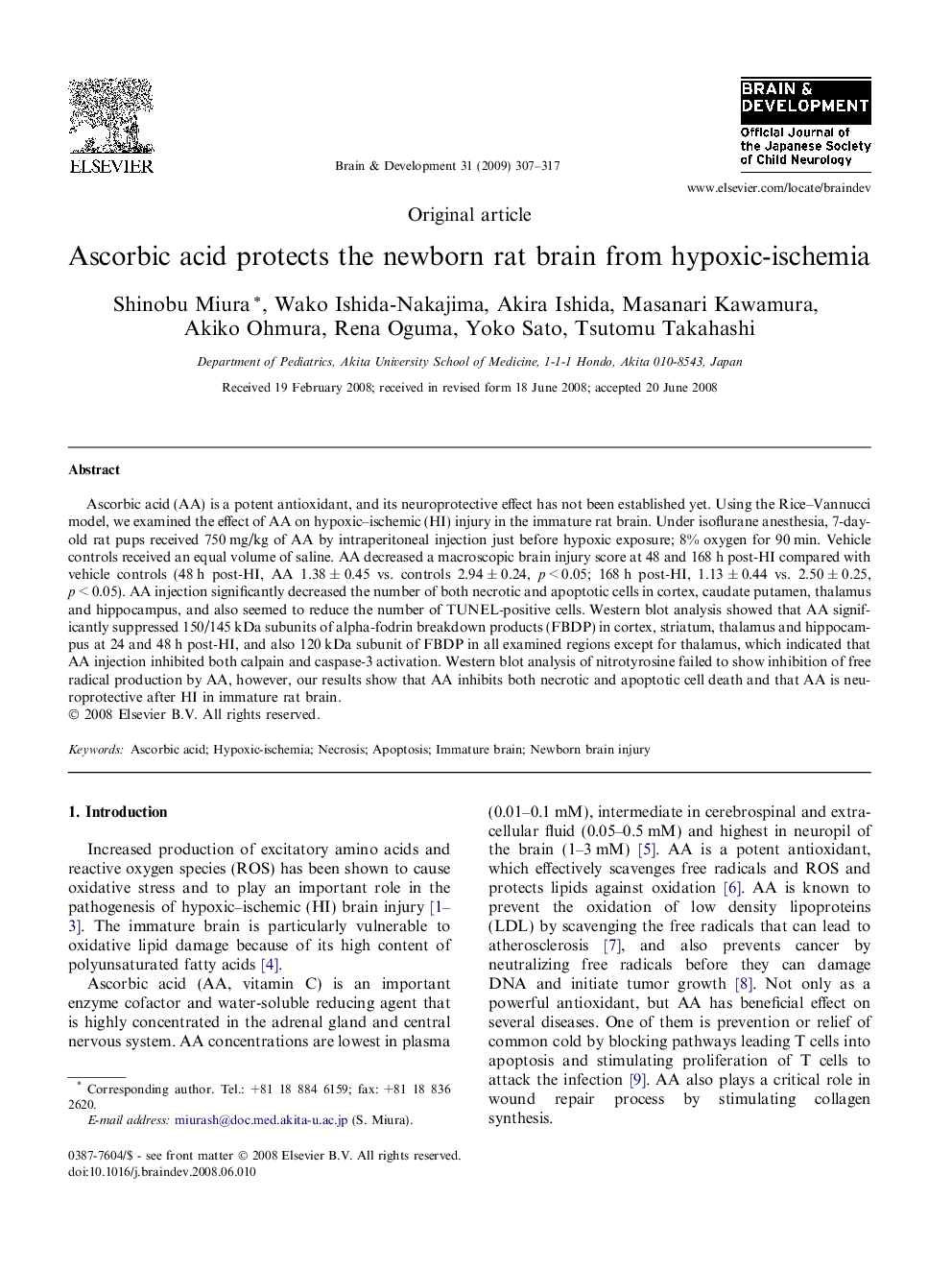| Article ID | Journal | Published Year | Pages | File Type |
|---|---|---|---|---|
| 3038131 | Brain and Development | 2009 | 11 Pages |
Ascorbic acid (AA) is a potent antioxidant, and its neuroprotective effect has not been established yet. Using the Rice–Vannucci model, we examined the effect of AA on hypoxic–ischemic (HI) injury in the immature rat brain. Under isoflurane anesthesia, 7-day-old rat pups received 750 mg/kg of AA by intraperitoneal injection just before hypoxic exposure; 8% oxygen for 90 min. Vehicle controls received an equal volume of saline. AA decreased a macroscopic brain injury score at 48 and 168 h post-HI compared with vehicle controls (48 h post-HI, AA 1.38 ± 0.45 vs. controls 2.94 ± 0.24, p < 0.05; 168 h post-HI, 1.13 ± 0.44 vs. 2.50 ± 0.25, p < 0.05). AA injection significantly decreased the number of both necrotic and apoptotic cells in cortex, caudate putamen, thalamus and hippocampus, and also seemed to reduce the number of TUNEL-positive cells. Western blot analysis showed that AA significantly suppressed 150/145 kDa subunits of alpha-fodrin breakdown products (FBDP) in cortex, striatum, thalamus and hippocampus at 24 and 48 h post-HI, and also 120 kDa subunit of FBDP in all examined regions except for thalamus, which indicated that AA injection inhibited both calpain and caspase-3 activation. Western blot analysis of nitrotyrosine failed to show inhibition of free radical production by AA, however, our results show that AA inhibits both necrotic and apoptotic cell death and that AA is neuroprotective after HI in immature rat brain.
